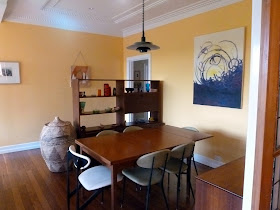Blog post brought to
you by Cordell
Online information is my preferred source of design and room
makeover inspiration while we have been renovating the Sow’s Ear these past
four or so years. And as much as I love design
magazines and books, they are becoming slightly more obsolete for me (mostly because
limited space becomes an issue with full bookshelves) now that there are more
quality resources online.
Here are my top 3 go-to inspiration sources when planning a
room makeover:
Blogs
Design and renovations blogs are a great and inexpensive way
to obtain the information we need to tackle a project. I follow quite a few
local Queenslander renovation blogs which have provided us a lot of food for
thought when making choices about renovating the Sow’s Ear. West End Cottage and Walk Among the Homes have been
some of my favourite local blogs and I am a huge fan of Desire to Inspire - a joint
Australian/Canadian blog which showcases a diverse range of interiors and
exteriors from around the globe.
The beauty of a design blog is that they are also
interactive. You can always leave a comment or ask questions and the bloggers
are generally very helpful.
Instagram
I have a big love affair with Instagram at the moment. It is
an app which allows people to share photographs with each other. It is where I
have been spending most of my online time lately because it’s a quick and easy
way to get my interiors and renovation inspiration fix. I stalk quite a few
local and international designers, architects and stylists as it seems most
have built drool-worthy design portfolios through Instagram. My favourites are
Brisbane local Kara Rosenlund
(she owns a sweet Queenslander too) and Brisbane interior design firm Wrightson Stewart
With our next big renovation and restoration venture I can
see myself spending even more time
scrolling through everyone’s portfolio.
Pinterest
Pinterest is
a handy online tool to use if you are renovating or sprucing up a home. Pinterest
allows you to find and save inspiration images onto boards which you can share
online. It’s like a virtual interior decorator mood board. You can set up your
boards room by room and save the inspiration images you find on the internet
that are relevant for your project. It’s a great way to organise your thought
processes as you plan a renovation.
I’ve set up boards for particular rooms and even have a few
boards dedicated to furniture and mid-century objects which I covet. Pinterest
is extremely addictive though and I try to limit my time there as I could spend
hours looking through design images!
So, those are my top three online places to go when planning
a room makeover. Where do you go to get
your inspiration?



















